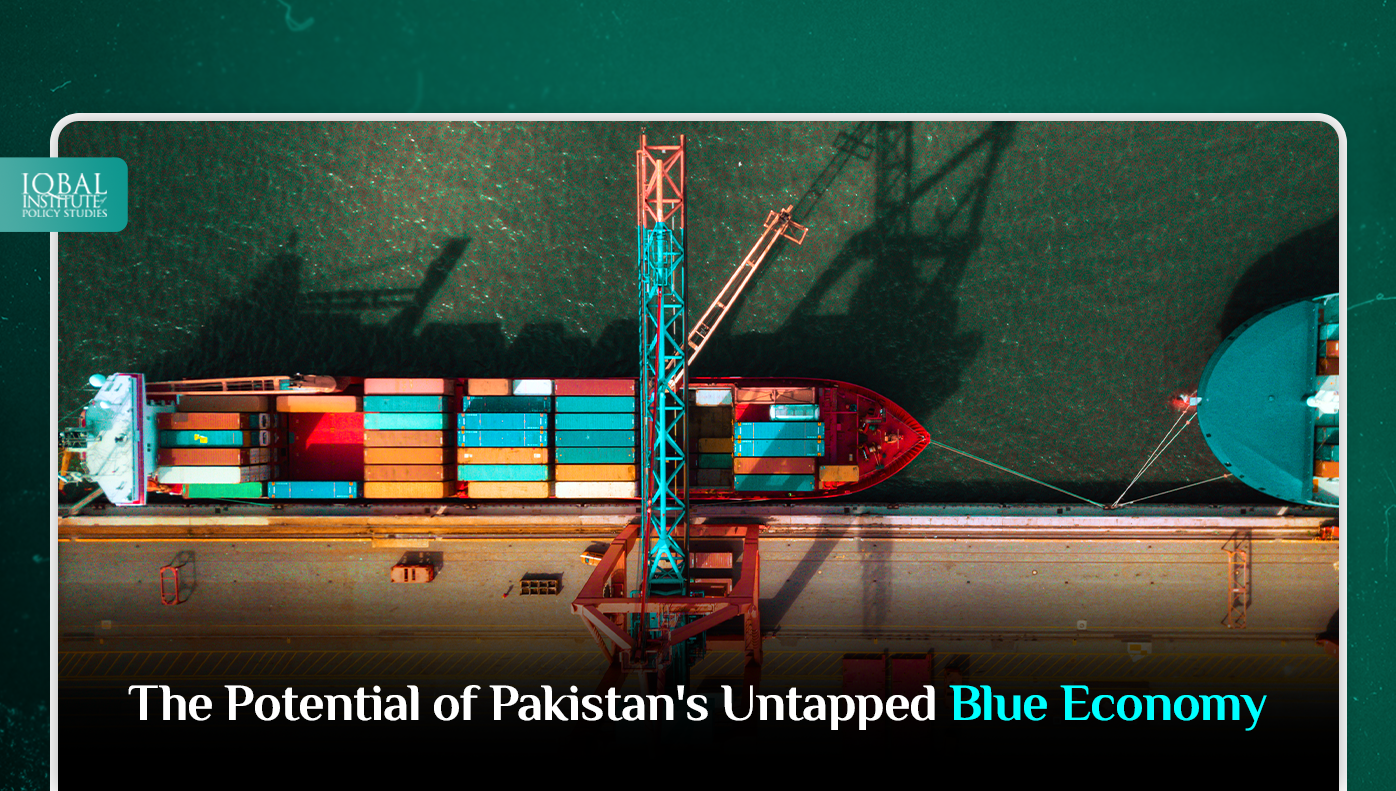What is a Blue Economy?
A blue economy is a development trend in the world, especially in countries with seas and oceans. The concept revolves around safeguarding the world’s oceans and using water resources efficiently for sustainable economic growth and development. Ocean resource usage is promoted to preserve livelihoods and economic growth while ensuring the environmental sustainability of coastal areas and oceans. The blue economy includes waste management, climate change risk, renewable energy, maritime transport, fisheries and coastal tourism. For a country with any coastal area, it is a great source of employment and wealth creation.
Potential of the Blue Economy
The earth is covered with 71% of water, which is important as around 80% of the world’s species live under oceans, and millions of people are directly or indirectly linked to the economy of the ocean. It is estimated that the world ocean economy is approximately $1.5 trillion per year. Moreover, around 80% of world trade is carried through oceans. A study estimated that about 34% of crude oil production would be from offshore oil fields, which shows the blue economy’s potential. The blue economy could yield global profit as sustainable use of the ocean can lead to economic growth, improve livelihoods and provide job opportunities. Even in history, oceans have been a significant part of economic growth as a lot of trading of spices and textiles was made through ships and boats. Many large economies are doing further research and exploring the potential of the blue economy, considering it can contribute towards economic growth. Furthermore, it has high tourism potential, and green energy as newer technologies can be used in the marine sector.
In recent years, the energy sector has been growing exponentially, and oceans are popular sites for renewable energy. Alternate energy resources such as hydropower, wind, and tidal energy also have a lot of potentials. According to International Energy Agency (IEA), offshore wind power has the potential to generate more than 18 times the global energy demand. It is just one type of energy resource, and many more can be produced through other sources.
Economic Potential in Pakistan
Pakistan is blessed with over 1000km of coastal line and an Exclusive Economic Zone (EEZ) covering approximately 240,000 square km. The country has the massive potential for a blue economy; under China-Pakistan Economic Corridor (CPEC), the economy is expected to flourish. Pakistan needs to diversify and focus on the blue economy as it can create jobs in fisheries, shipping, aquaculture, energy production and tourism. All these sectors have high potential in a country like Pakistan because it has the resources they need to utilise efficiently. The government of Pakistan declared the year 2020 as the “Year of the blue economy” as a lot of investments were made in that sector, and a visible shift was seen. Investment opportunities at Gwadar Port opened many doors as it opened the way to the oil-rich Persian Gulf. It will provide more access to natural resources from Central Asia and contribute positively to Pakistan’s economy.
Pakistan is also blessed with natural resources such as minerals, fish, marine, hydrocarbons and many more. The Karachi port handles around 60% of the national cargo, while Bin Qasim port handles nearly 40%. Almost 1700 cargo ships visit Karachi Port, and 1500 cargo ships visit Bin Qasim port annually. The coastline of Pakistan is ranked 74th among the 142 coastal countries, whereas the mangrove area is the 6th largest in the world. Also, the Liner Shipping Connectivity Index (LSCI) ranking has increased by 34 points. Hence, the country can flourish and achieve economic stability by recognising the potential of Pakistan’s blue economy.
The fishery sector of Pakistan also contributes 1.8% to the GDP but still has a lot of untapped potential, which can contribute even more. Several glaciers melting in the northern areas are forming lakes that can be used for cold-water fish farming. Despite climate change, such natural resources can be utilised efficiently to flourish the economy. Moreover, marine tourism can further contribute to the GDP of Pakistan. In 2021, it added $0.3 billion to the GDP, which shows the country’s high marine tourism potential.
It is important to have bilateral relations with other countries so that the blue economy can effectively work. Tourism through the blue economy can bring investment and portray a better image of Pakistan. Technical and financial support must be geared to build economically profitable industries through the blue economy. Nevertheless, stronger policies and realising potential are needed to reach the optimal point. With many maritime resources, Pakistan has yet to fully utilise the blue economy’s capability.
Conclusion
In this realm, Pakistan’s blue economy can play a major role in tackling economic instability. CPEC is a hallmark project that will increase connectivity between land and sea while maintaining good relations with China. Shipping is the cheapest mode of transport, and a country like Pakistan must benefit from it. However, it is important to make strategic policies to tap the blue economy potential. The neglect of this sector has already hampered Pakistan’s growth, adversely impacting the economy. If policies are implemented, Pakistan can become the geo-economic hub and revive back in the blue economy, crossing India and Bangladesh. Considering our country’s current situation, a comprehensive and all-encompassing approach is needed, along with the collaboration of private and government sectors. Lastly, the unemployment gap will also be filled as millions of jobs will be created.



Leave a Reply